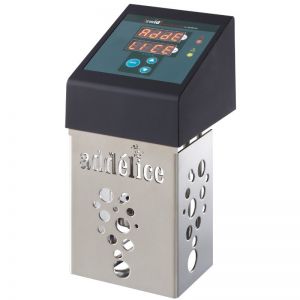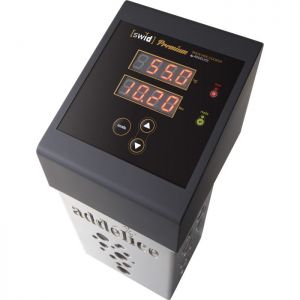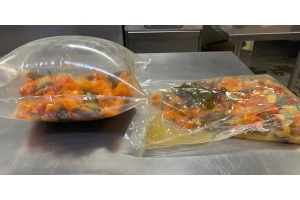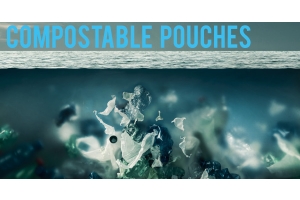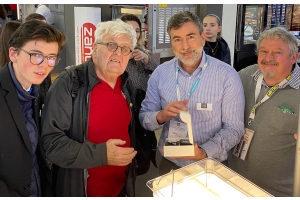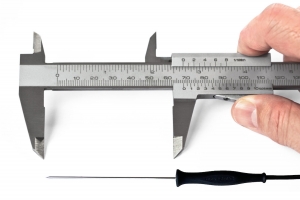How to Clean/Descale and Maintain your Immersion Circulator?
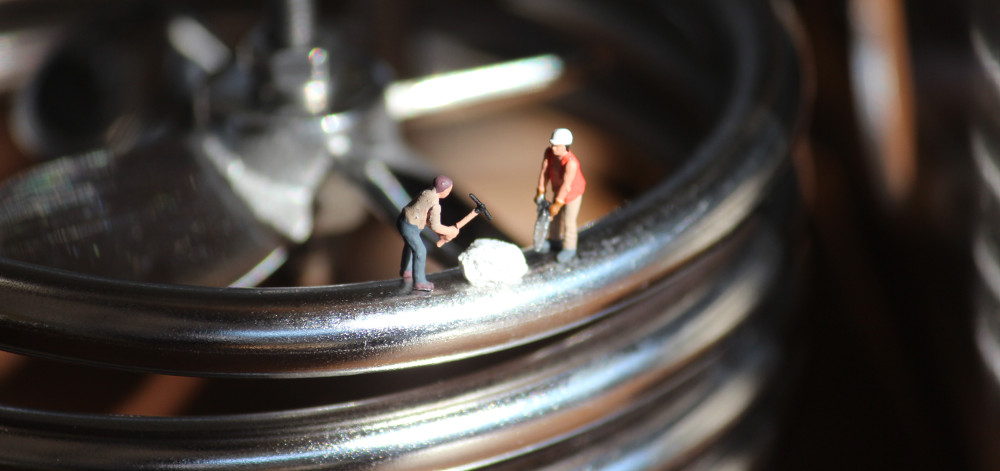
How to descale and maintain your immersion circulator?
1. Prevention
Before carrying out maintenance operations on your SWID immersion circulator, it is important to follow simple rules of good conduct and use. The following common sense rules apply to all immersion circulators on the market:
- while in use, place the SWID immersion circulator and the waterbath in a ventilated place, as far as possible from a source of dust or grease (stove, fryer). Otherwise the fan which cools some internal components of your immersion circulator could get stuck and cause some technical issues.
- limescale deposits: do not pour vinegar into the water bath in order to "neutralize" the hardness of the water. Vinegar, even when heated to low temperatures, creates acetic acid vapors. Over time these acid vapors can corrode electronic components and thus reduce the reliability of your immersion circulator.
- adding a few liters of water to your waterbath every day (without ever emptying it) for a week will greatly increase the lime concentration in your container. This habit should be avoided. As soon as you have the chance, completely empty your container and replace it with "fresh" water. It is also a question of hygiene.
- the SWID immersion circulator is a high-precision instrument filled with electronics. In other words, a sous vide immersion circulator is a computer performing thousands of calculations per second that is placed over a steam bath for long hours... To sum up your sous vide device is subject to significant constraints in a hostile environment.
During use, the inside of the casing of your immersion circulator is ventilated by a powerful fan* which creates a pressure preventing the steam from the water bath from entering the casing. When you switch off your immersion circulator (and therefore the fan), and if it is kept attached to the container, steam can seep into the immersion circulator. It is strongly recommended, for all immersion circulator on the market, to detach the immersion circulator from its container and put it aside after each use.
2. Immersion circulator descaling and degreasing procedure
Generally all the immersed parts of an immersion circulator are made of stainless steel and easily accessible. Which is the case of the SWID immersion circulator. No tools are required to clean or descale the SWID. We recommend carrying out the maintenance operations described below after each week of intensive use.
a. Degreasing the immersion circulator
It can happen that a poorly sealed sous vide pouch opens during cooking. Fat can then stick to the immersed parts of the immersion circulator. The safety float switch is an important part of your sous vide device. Make sure the float switch is not blocked by fat. Your float is made of stainless steel (some models are made of foam) and easily cleaned with dishwashing liquid. Simply run your immersion circulator at 30°C in a small pot with soapy water and for about 30 minutes.
b. Descaling the immersion circulator
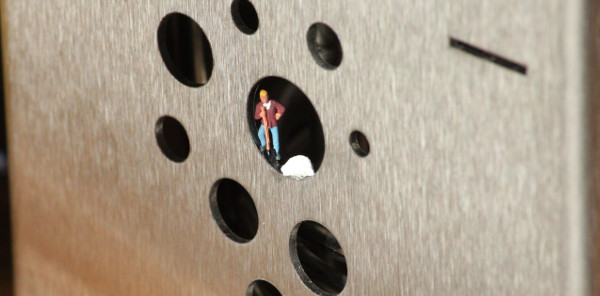 The mechanism of the SWID immersion circulator ensuring the mixing of the water bath is very simple and easy to descale.
The mechanism of the SWID immersion circulator ensuring the mixing of the water bath is very simple and easy to descale.
Which product to use to descale any immersion circulator?
No need to buy “specially made” products to descale your immersion circulator. Products commonly exist on the market for a low cost. We have selected two for you:
- Citric acid: it is natural, biodegradable and non-toxic to humans and the environment. You can find on Ebay or Amazon 1Kg of citric acid for less than €10. You can also use these citric acid crystals to descale your coffee maker!
- Place your immersion circulator in a small pot filled with water.
- Add a tablespoon of citric acid for 5 to 8 liters of water.
- Set the immersion circulator to 50°C for 1 hour.
- Thoroughly rinse the immersion circulator after the descaling operation. - Sulfamic acid (H3NSO3) : is a chemical compound widely used by industry or to clean household coffee makers (Starwax), for example. Sulfamic acid can easily be found on the internet in large quantities. Please respect the conditions of use indicated on the packaging.
Tips and good practices to keep your immersion circulator in perfect condition
1. When you switch off your immersion circulator, detach it from the container and place it in a dry place. Do not leave your immersion circulator off above a hot water bath!
2. After using your immersion circulator, do not wrap it with plastic wrap to transport it, for example. Let the residual humidity contained in the casing of your immersion circulator get out through the ventilation grid! If you are in doubt and think your SWID immersion circulator is loaded with moisture, there are techniques to dry it out. Contact us about this.
3. It is important to place your immersion circulator away from a source of dust and grease but also from a potential source of electromagnetic fields. An induction hob generates a strong electromagnetic field and this is normal. Unfortunately, this electromagnetic field can disturb the temperature measurement system of your immersion circulator. We recommend that you do not place your immersion circulator under or in the immediate vicinity of an induction hob.
From experience we have learned that certain professional equipment (refrigerated cabinet, etc.) which is functional but with faulty ventilation can abnormally generate an electromagnetic field. If this happens to you, move your immersion circulator a few meters away and test it. Then contact the repairer of the equipment that is causing the issue.
(*) Some immersion circulators do not have an integrated ventilation system and are completely closed and sealed. These immersion circulators are not to be preferred because they are not repairable. In the event of a problem during the guaranteed period, you will be able to obtain an exchange unit. Beyond the warranty period you will not be able to obtain a replacement unit or at a high price. In both cases, this type of equipment is contrary to the notion of repairability and clutters our landfills with electronic equipment when, probably, it would suffice to replace a simple and small electronic component!
